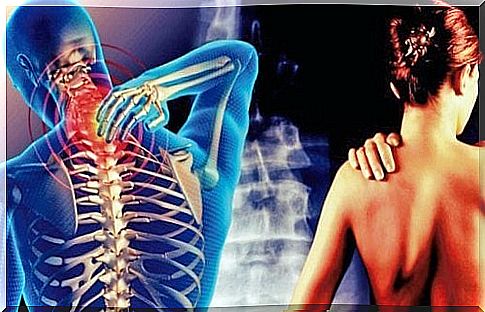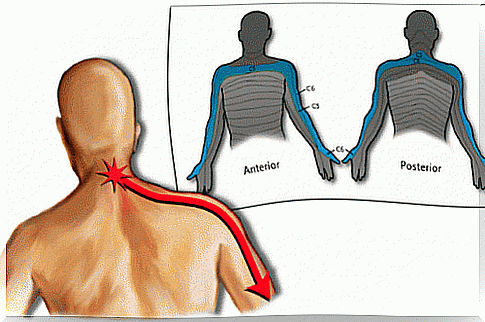Cervico-brachial Neuralgia: Useful Information

Although its name seems intimidating, cervico-brachial neuralgia is much more common than we might imagine.
It is characterized by a neck pain that starts in the neck region, descending along the spine and can affect the arms or even the fingers.
Cervical-brachial neuralgia condition is very unpleasant. Many people feel that only athletes can be affected, but factors such as stress, chronic anxiety or arthritis can lead to its development.
In the following we offer you more information on this issue which is not always given due attention.
When the movement becomes painful
To move your head, to grab an object, to sit on a chair, to read, to lie in bed, even to breathe – all these actions cause you a lot of pain. Cervico-brachial neuralgia is concentrated, especially, in the area of the spine.
It’s not just a simple neck injury or a muscle strain. It’s something more than that.
The area above the spine contains seven vertebrae, from C1 to C7, which are also the smallest in the body.
- Inside these small vertebrae there are also ligaments, tendons, muscles, nerves, etc.
- When some of these components become inflamed, the pain spreads to other parts of the body.
Inflammation usually begins in the spine, then reaches the shoulders, shoulder blades, arms and even the torso.
What are the causes of cervico-brachial neuralgia?
- As mentioned above, one of the main causes of cervico-brachial neuralgia is injuries caused by an accident or sports activity. Dislocations, fractures, dislocations or muscle strains are the main factors that lead to pain.
- At the same time, long periods of stress and anxiety can cause this problem.
- Another cause is inflammatory processes, such as rheumatism.
- People with degenerative diseases, such as arthritis, may develop cervical and brachial neuralgia over time.
- The same is true for tuberculosis patients, for example.

What are the symptoms?
You’ve probably heard other people say that I feel a very intense pain, as if they were stabbed in the back. In a way, it’s something like that. The difference is that the pain radiates to other areas of the body, feeling like a burn.
In addition to pain, cervico-brachial neuralgia also causes:
- Strong cramps
- Loss of sensitivity in certain regions
- Muscle weakness
- Numbness
- Intense cold or hot sensations (like a burn)
At the same time, you may experience headaches, stiff neck, dizziness or nausea when sitting in a chair. Almost every movement causes major discomfort.
What treatments are there?
Cervical-brachial neuralgia requires a personalized treatment, which only a specialist can offer. First of all, it is necessary to take the right medicines to reduce inflammation.
- Physiotherapy helps relieve pain and improve limb mobility.
- Another useful therapy is based on the alternation between hot and cold temperatures. Hot showers, hot water bags or rosemary tincture massages are very effective.
- In addition, if you are diagnosed with cervico-brachial neuralgia, it is important to stay in bed to rest. All conditions involving intense musculoskeletal pain require a change in lifestyle.
- Specialists recommend that patients lie in bed on their backs, with a sore arm at the nape of their neck.
Cervico-brachial neuralgia has a good prognosis
In general, cervico-brachial neuralgia has a good prognosis. What this means? People with a favorable medical history tend to notice an improvement in four to six weeks.
- Undoubtedly, the problems occur in patients with rheumatism or arthritis. In the case of chronic diseases, the periods of relief of symptoms alternate with weeks of major discomfort.
- If you are experiencing these discomforts, it is important to adopt a healthy lifestyle. A balanced diet, moderate exercise and managing anxiety and stress are key factors in achieving this.
Patients with symptoms of high complexity may require surgery. However, only the doctor is able to propose such a solution.









